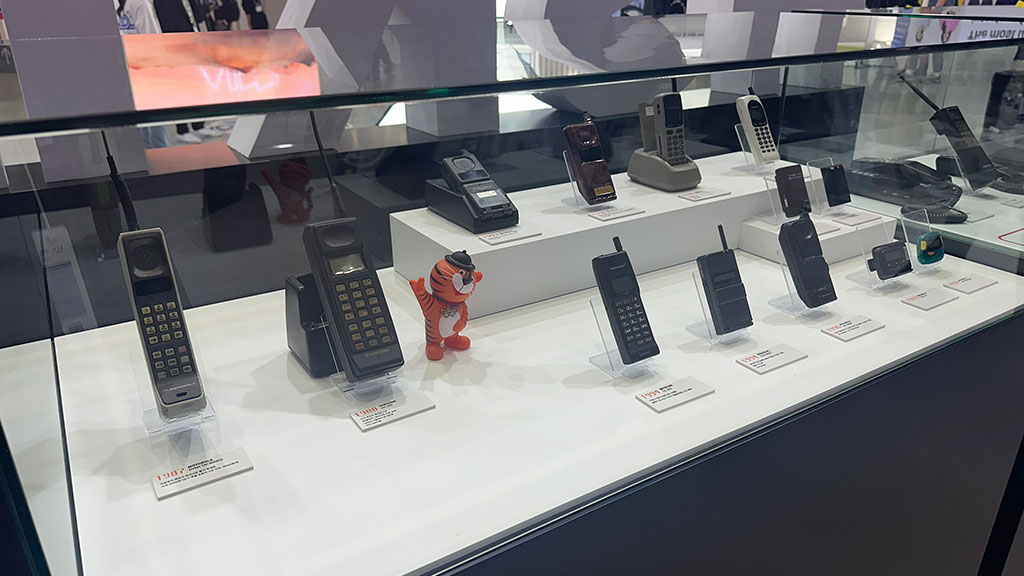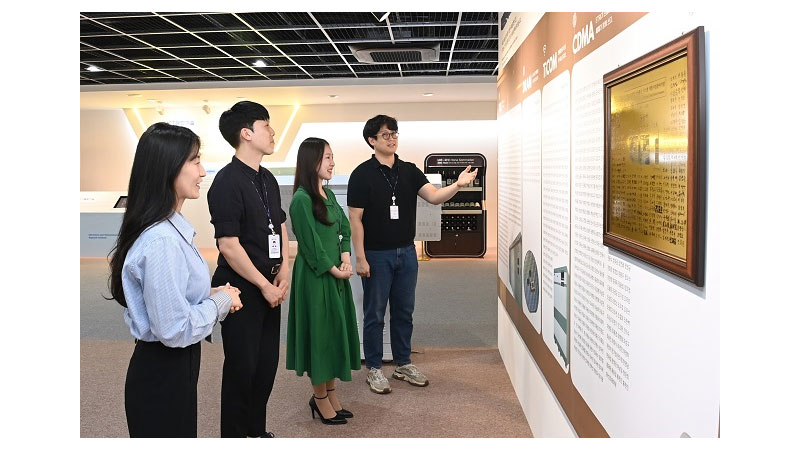[김예지의 인사이트] [연재기획-통신은 소통의 역사다 ③] 세계 최초 휴대전화, 부의 상징이었던 벽돌폰
기사입력 2024.05.31 08:00
.jpg) ▲드라마 '응답하라 1988' 장면
▲드라마 '응답하라 1988' 장면세계 최초 휴대전화, 부의 상징이었던 벽돌폰
1세대(1G), 2세대(2G)의 흐름과 통신 기술을 중심으로
1세대(1G), 2세대(2G)의 흐름과 통신 기술을 중심으로
[편집자주] 통신의 역사는 인간의 연결을 위한 끊임없는 노력의 역사입니다. 선사 시대부터 사회적 동물인 인간에게 통신의 기능은 소통과 약속의 수단으로 작용했습니다. 우리나라에는 1888년 조선시대 전기통신이 최초 도입됐으며, 해방 후 1980년대 통신사업과 기술의 비약적 발전으로 정보화 시대가 개막했습니다. 이제 5G, 6G 시대를 맞아 차세대 통신이라 꼽히는 위성통신, 양자통신을 바라보고 있습니다. 인공지능(AI)·로봇·클라우드·UAM 등 첨단 기술 발전과 함께 통신은 점점 중요해지며, 끝없이 발전할 것으로 기대됩니다. 통신은 거의 모든 분야에 걸쳐져 있는 가장 기본이 되는 동시에 핵심이 되는 기술입니다. 본지는 이번 기획 시리즈를 통해 통신의 역사부터 소소한 사건, 기술, 트렌드까지 통신과 관련된 이모저모를 다뤄보겠습니다.
■ 벽돌이라 불리는 전화기
1970년대 초, 전화기의 컬러도 똑같았던 시절 전화 한 대의 가격은 서울시 내 50평 아파트 한 채보다 비쌌다고 한다. 그 당시 아날로그 방식의 옛날 전화기는 1부터 0까지 씌여진 숫자판을 뱅그르르 돌려가며 전화번호를 입력해야 했다. 전화기 선은 돼지 꼬리처럼 꼬여 있는데, 심한 잡음을 보완하기 위해서였다.
신원호 감독의 드라마 ‘응답하라’ 시리즈에서도 당시의 소품을 잘 구현해 시대별 전화기의 변천사를 보는 재미가 있는데, 1988 시리즈에서 다이얼식 유선 전화기 또는 네모난 버튼식 전화기가 등장한다. 또한 유선 전화기뿐만 아니라 가정식 무선 전화기도 보이는데, 정환이네처럼 일부 집에서만 볼 수 있었던 전화기다.
삼성은 1988년 국내 최초 휴대폰인 SH-100를 출시했다. 무게가 800g, 안테나를 포함한 길이만 무려 40cm로, 가격은 180만원이다. 당시 승용차 1대 가격이 400만원대에 달하는 것을 생각하면 휴대폰의 가치가 얼마나 컸는지 알 수 있다.
해당 휴대폰은 일명 냉장고폰, 벽돌폰이라고 불렸는데, 마치 벽돌 하나처럼 크기가 크고 무거웠기 때문이다. 가끔 스마트폰이 오래됐거나 먹통이 됐을 경우, 우리는 벽돌폰이라 비하하지만 당시 벽돌폰은 부의 상징인 셈이다.
삼성이 출시하기 전 1983년 세계 최초 휴대전화인 모토로라 다이나택(DynaTAC)도 출시된 바 있지만, 초기 비싼 가격으로 많이 쓰이지 않았다. 모토로라는 1987년 국내에서 DynaTAC8000SL를 최초 출시했는데, 당시 가격은 240만원이었다.

▲삼성 SH-100
휴대폰은 벽돌폰 시절을 거쳐 점차 대중화 되기 시작한다. 초기 ‘워키토키’와 ‘핸디토키’ 무전기와 같은 모습에서 현대에 들어서 카폰, 시티폰, 휴대폰, 스마트폰 등의 무선이동통신 수단이 발달하기 시작했다.
특히 국제전기통신연합(ITU)가 지정한 ‘1세대(1G)’ 이동통신 기술 표준은 본격적으로 1984년 한국이동통신서비스의 차량전화 서비스(카폰)에서 시작됐다. 최초의 국산 카폰은 삼성의 SC-1000A로, 가격은 100만원대였다.
‘1G(1980~1990년대)’는 1984년 일반가입자를 대상으로 이동통신 서비스가 실시된 시점부터 통신서비스 인프라가 구축된 1990년대 초기까지를 말한다.
1984년 3월 한국이동통신서비스주식회사가 설립돼 시장 독점구조를 형성했고, 가입자는 매우 적었다. 한국전기통신공사의 자회사인 한국이동통신은 차량전화 서비스를 개시하고, 서울·안양·수원 등 수도권 지역에서 전자식인 ‘AMPS(Advanced Mobile Phone Service)’ 아날로그 방식의 셀룰러 서비스를 제공한다.
또한 1988년 서울올림픽을 계기로 휴대전화 서비스가 크게 발전해 지속적인 인프라 구축을 통해 1993년 말 전국 74개 시 전역과 읍 및 인접 고속도로 주변지역에서도 서비스 제공이 가능해진다. 한국이동통신서비스는 SK텔레콤으로 사명을 변경했다.
■ 과학통신의 발달, 정보화 시대를 열다
전기통신기술과 컴퓨터 처리기술의 결합은 정보화 시대의 밑거름이 됐다. 통신에 전파를 본격적으로 이용하게 되며 사람들은 시간과 장소의 제약에서 벗어나게 됐다. 사람이 휴대하면서 사용할 수 있는 바야흐로 ‘모바일(mobile)가 열렸다.
이탈리아의 마르코니(G.M.Marconi)가 1895년 2.8km거리에서 모스 신호를 보내는데 성공함으로써 무선통신 시대를 열었으며, 캐나다 출신 과학자 레지널드 오브리 페선던(Reginald Aubrey Fessenden)이 1906년 전파를 이용해 목소리를 전달하는 실험에 성공하며 정보통신의 개념이 구체화됐다.
1980년대 추진된 전전자교환기 개발사업은 주요한 우리나라 통신산업의 발전 계기가 됐다. 특히 한국전기통신연구소(ETRI)를 개발 주체로 총 연구비 240억 원, 연인원 1300명이 투입됐다. ETRI는 TDX를 비롯해 반도체(DRAM), 디지털 이동통신 시스템(CDMA), 휴대 인터넷 와이브로(WiBro)’ 등을 개발했다.

▲TDX 등 통신기술을 개발해 온 ETRI
전국 전화기는 완전 자동화를 이루고, 품질 불량이라는 오랜 전화 문제를 해소해 이를 토대로 1987년에는 총 전화 공급 규모가 1000만 회선을 상회하게 된다. ETRI의 당시 연구원들은 “TDX의 기술 개발 노하우는 반도체, 슈퍼컴퓨터, CDMA를 탄생시키는 계기가 됐다”고 말했다.
1980년대는 본격적 통신 사업의 틀이 잡힘에 따라, 전화 이외의 다른 통신서비스도 확충된 시기다. 예컨대 1982년 무선호출, 1984년 데이터통신, 1988년 휴대용 전화 등 새로운 기간통신서비스가 선을 보였다.
1984년 데이터 네트워크, 1987년 부가통신망(value-added network, VAN) 등 부가통신서비스도 도입된 이후, 방송서비스 분야에서도 컬러 TV 방송이 시작됐고, 1985년에 음성다중방송이 실시됐다. 1980년대를 지나 정보통신산업은 1990년대 이후 급격한 성장세를 보인다.
다음 편에는 이동통신이 시작된 1세대를 지나 5G에 도달하기 전까지의 통신 역사가 이어집니다.
많이 본 뉴스
[열린보도원칙] 당 매체는 독자와 취재원 등 뉴스이용자의 권리 보장을 위해 반론이나 정정보도, 추후보도를 요청할 수 있는 창구를 열어두고 있음을 알려드립니다.
고충처리인 장은성 070-4699-5321 , news@e4ds.com


.jpg)








